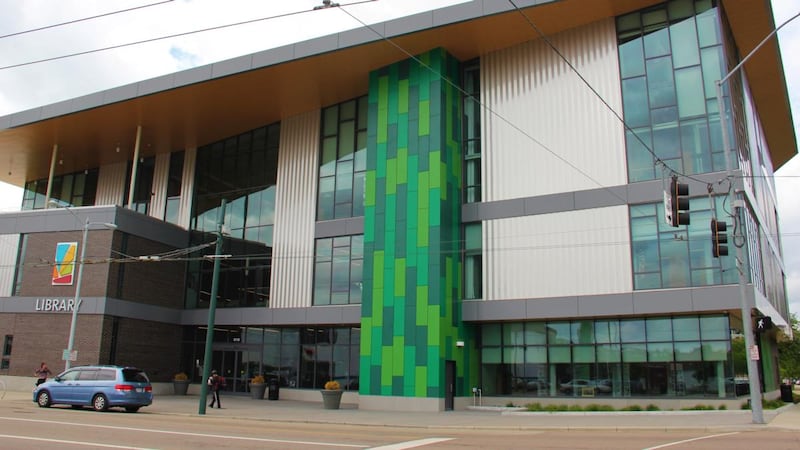If Dayton’s downtown library represents a vision for its future, then this is a city with big plans.
The gleaming, 9,300sq m building opened in 2017 at a cost of $64 million (€57 million), as part of a city-wide, $187 million effort to modernise Dayton’s most important public space: the local library network. The library is adorned with a stunning vaulted foyer and boasts modern recording studios, a cafe and a wide range of civic programmes.
A city of 140,000, Dayton is trying to shed a decades-long legacy of industrial decline and socioeconomic decay that, in the 2016 presidential election, contributed to voters backing a Republican Party candidate for the first time in almost 30 years.
In that election, Dayton, in Montgomery County, was the largest city in Ohio and one of the largest urban areas in the region to vote for Donald Trump, a result that helped him win Ohio's coveted 18 electoral votes en route to the White House. The result served as an indicator of the frustration Dayton residents felt with the status quo.
"Trump was the first Republican to win Montgomery County since 1988 – just like he was the first Republican to win many midwestern states and counties since the 1980s," says Christopher Devine of the University of Dayton. "This is a county that had experienced significant job losses over recent decades and even seen a decline in population. Trump pitched his message right at these voters."
One of the midwestern cities hit hardest by the loss of manufacturing jobs and, until recently, holder of the unenviable tag of “America’s opioid capital” due to the high number of overdose-related deaths there, Dayton today is putting huge effort into turning its fortunes around.
Free transport
In recent months, it has embarked on projects such as a free downtown city bus to encourage people out of their cars and into the city centre, and a free taxi service to help get revellers home safely on holiday weekends.
Its low cost of living – 7 per cent below the national average – has attracted a bustling immigrant community, including more than 1,000 Ahiska Turk families who fled southern Russia after qualifying for refugee status in the US in 2005. This community has been at the forefront of revitalising Dayton's Old North district, parts of which were damaged in the devastating tornado outbreak on May 27th.
But perhaps Dayton’s biggest accomplishment has been reducing its high number of opioid-related deaths. While Montgomery County recorded 566 overdose deaths in 2017, last year that fell to 289. Officials behind a campaign to curb deaths from overdoses say gathering representatives from diverse backgrounds such as the police and health and addiction services to form the Community Overdose Action Team has been essential in saving lives.
"The biggest factor [in reducing deaths] has been the collaboration we have experienced in our community. The community has come together and has worked hard to create a co-ordinated response," says Barbara Marsh of Public Health Dayton and Montgomery County.
However, the city is still a long way off achieving its goals. Shootings and drug activity remain common, especially in Dayton’s poor western neighbourhoods, where poverty, socioeconomic issues and racial segregation are rife. So-called “white flight” to suburban areas has seen the city lose important tax dollars and half its population since 1960.

The sense that many Dayton residents continue to struggle is pervasive. Multiple visits to the new downtown library provide evidence of a place that’s as much a refuge for the poor and unemployed escaping the winter cold and summer heat as it is a place for intellectual engagement or education.
Midst of change
For Audria Maki, however, Dayton is a place in the midst of change. The owner of coffee enterprise Reza's Roast, she will soon expand her business to include a new cafe on Wayne Avenue, a downtown neighbourhood for years considered unsafe, but which in recent years has seen an increasing number of entrepreneurs move in in search of low-priced property.
She and her husband Ebi, whose family immigrated from Iran decades ago, will soon join three other recently opened cafes and a burgeoning restaurant scene along the avenue.
"From a business perspective, this area is great because we don't want to be located next to a Starbucks. There are a lot of restaurants around here, and we always liked the look of the area," she says. Turning a 110-year-old building into a modern cafe has involved much time and money, but Maki has faith in the city's economic and social recovery. "We want to still be here in 80 years. We want our grandchildren to be able to come here."
As for whether an improving economy fuelled by new businesses could see Dayton turn back to the Democratic Party and help it win Ohio in presidential elections 18 months from now, few are willing to make any predictions yet.
“Since Trump won this county by less than a percentage point in 2016, even a marginal improvement by Democrats would flip the county,” says Devine. “But Trump has scrambled many of the traditional dynamics of campaigns – especially in terms of socioeconomic status’s effect on voting.”











